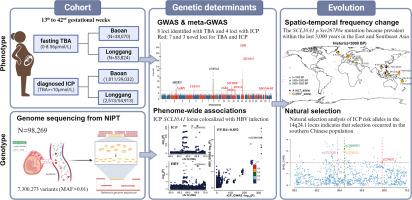当前位置:
X-MOL 学术
›
J. Hepatol.
›
论文详情
Our official English website, www.x-mol.net, welcomes your
feedback! (Note: you will need to create a separate account there.)
Genetic study of intrahepatic cholestasis of pregnancy in Chinese women unveils East Asian etiology linked to historic HBV epidemic
Journal of Hepatology ( IF 26.8 ) Pub Date : 2024-11-14 , DOI: 10.1016/j.jhep.2024.11.008 Yanhong Liu, Yuandan Wei, Xiaohang Chen, Shujia Huang, Yuqin Gu, Zijing Yang, Xinxin Guo, Hao Zheng, Hanxiao Feng, Mingxi Huang, Shangliang Chen, Tiantian Xiao, Liang Hu, Quanfu Zhang, Yang Zhang, Guo-Bo Chen, Xiu Qiu, Fengxiang Wei, Jianxin Zhen, Siyang Liu
更新日期:2024-11-14
Journal of Hepatology ( IF 26.8 ) Pub Date : 2024-11-14 , DOI: 10.1016/j.jhep.2024.11.008 Yanhong Liu, Yuandan Wei, Xiaohang Chen, Shujia Huang, Yuqin Gu, Zijing Yang, Xinxin Guo, Hao Zheng, Hanxiao Feng, Mingxi Huang, Shangliang Chen, Tiantian Xiao, Liang Hu, Quanfu Zhang, Yang Zhang, Guo-Bo Chen, Xiu Qiu, Fengxiang Wei, Jianxin Zhen, Siyang Liu

|


















































 京公网安备 11010802027423号
京公网安备 11010802027423号